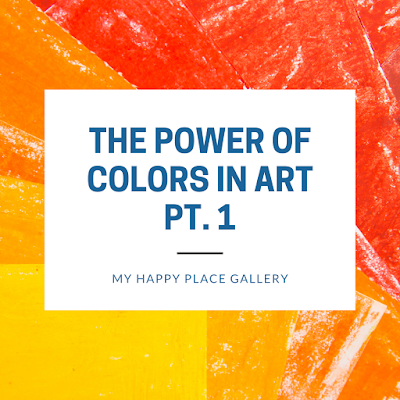Interviewing Artists, Pt. 2: How Has Your Art Changed Over The Years?
Just like anything else, the more you practice
and learn, the more you grow. This includes art. In continuation of our newest
blog series, featuring our gallery’s artists, we asked the same five (Susie
Ranager, Patt Odom, Gail Cheney, Vanda McCormick, and Charlie Taylor) “how has your art changed over the years?”
From their processes to their creative expression, these artists have developed
their abilities and evolved their art since they first began their crafts.
Susie
Ranager, Painter: “When
I first started painting, I was painting with watercolors. I found them very
unsatisfactory because you pretty much cannot change your mind when you’re
watercoloring. I’m a really fast painter, so I can't paint in oil either
because it’s too slow. I like to be able to change my mind all the time. Even
sometimes acrylics are too slow for me. So, I went from watercolors to mixed
media and acrylics, not particularly abstract but not as realistic. I like to
paint out of my head without any kind of visual. It does make things a lot
harder, but I think it makes things more interesting too.”
Patt
Odom, Painter: “I
was an educator for such a long time that I like going to workshops now. It’s
not because I want them to teach me anything. It’s just a new avenue to try and
distort my work more and to add elements that I'm not used to using into my
painting, so it’s again, not as realistic. I was so technical and so real. When
I was younger, I wanted everything to look just like it looked in nature. Then,
I realized a painting should look like a painting. Now, if I paint a canvas, I
want the viewer to see the paint first, not the object itself. I want them to
be aware that this is a painting not a photograph or the real thing.”
Gail
Cheny, Potter and Painter: “In college, I loved pastels and oil, and that’s all that I did. Then,
when I started back painting, I took wonderful workshops from Patt Odom and
Susie Ranager, who I always said I wanted to be like when I grew up. I really
love working with acrylics when I paint. Lately, over the past few years, I’ve
discovered alcoholic ink, which is really fast. What I love about it is that I
can use that in conjunction with my ceramics. When I do 2D work, it’s usually a
combination of mixed media and ideas that I got from Susie and Patt as far as
how to put things together. Then the alcohol ink and then put those ceramic
things in it, so it becomes a fantasy painting.”
Vanda
McCormick, Mixed Media Artist: “Well, I started like everybody else with watercolors and oils and
different media. As an art educator like Patt, in teaching my kids to
appreciate everything and appreciate art for the right reasons, why people
paint what they paint and make what they make, I've evolved into more mixed media
than most anything else now. Acrylics mostly, but I love fluid acrylics because
it takes me back to those watercolors too. If you look at some of my work, you
think it’s watercolor, but it’s actually fluid acrylics. I think as far as
design or the things that I paint haven’t really changed that much. It’s more
using the different media in different ways.”
Charlie
Taylor, Photographer: “I believe in following your own muse and going where your mind and
soul tell you where you need to go. Not do things other people have done. My
first series of images was of a pitcher plant. People said ‘you're crazy, man.’
But I developed a technique where you could dissolve the background and mute
the colors and bring it out, and I want it to look like a painting. If somebody
asks me “hey, is that a painting or a print,” then I know I’ve succeeded. I’ve
evolved away from that to an extent where I'm doing something more realistic.
But I don't feel that photographic print needs to be an exact replica of what
you see with your eyes. It’s a print. You can’t do that. I try to make them
conform to my vision, not the realism that a lot of people think a photograph
ought to do. I apply that every day when I look at something to see a process.
When you look at an object, you look at a line, form, shape, and color, and it
becomes one. I tried that quite a bit, and it works. I taught myself early on
to learn the techniques of lenses, cameras, shutters, and what to do. I
practiced that and got the root down and it clears your mind for artistic
feelings. You can focus on that instead of adjusting things like how to set
your camera. That paid off.”
As you can see, the method of creating is different for everyone. Even if you’ve done something like art for decades, there is always room to grow. These artists have worked hard over their lifetimes to develop their works into a way that best suits them and their visions. If you feel like you’re ready for a change, try expanding your knowledge or challenging yourself with something new to flourish your talents and grow as an artist!



Comments
Post a Comment